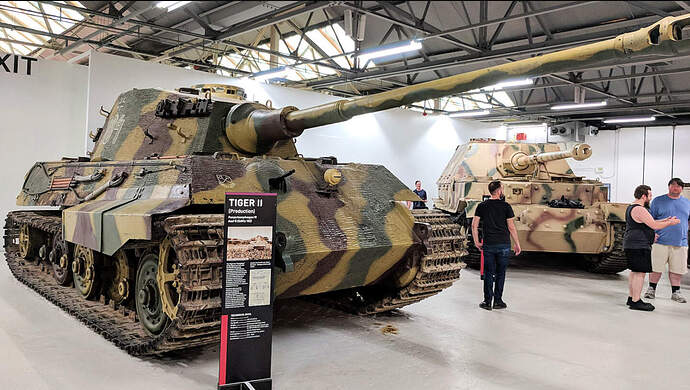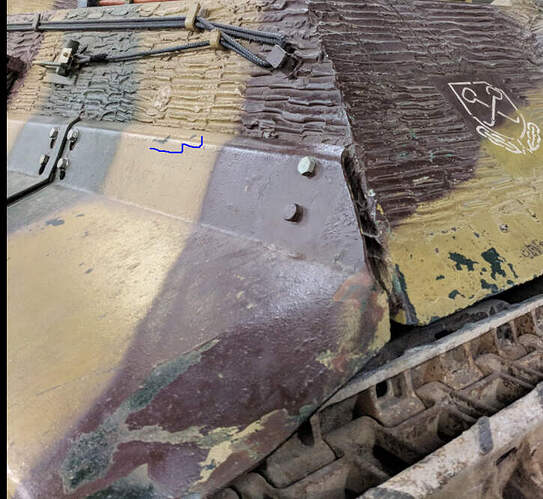Hi there, first time posting here!
I was wondering if anyone knows if adding gloss/satin varnish to acrylic paint will prevent it being chipped by chipping fluid? I want to achieve a satin result without varnishing after the chipping and therefore losing the reflective difference of the chips.
Any insight is welcome!
I’m eager to hear what you find out. I usually thin the top coat with water (rather than lacquer) to make it easier to chip…
@thegmole
Hello and welcome.
As the more knowledgeable folks haven’t replied yet, I thought I’d throw in my basic experience.
The short answer to your question is “No”, adding an acrylic varnish (gloss/satin) to your paint will not prevent it from chipping though it may make it more difficult to chip. Adding a lacquer/enamel varnish will give you a goopy mess.
At the risk of “teaching grandma to suck eggs”, chipping fluid doesn’t actually “chip” anything. It forms a barrier that prevents your surface/presentation color from adhering to your base (chip) color. The application of water to your topcoat dissolves/liquifies the intermediate chipping fluid layer and allows the topcoat to flake off giving you a chipped finish. phil2015’s practice of thinning his topcoat allows the water to reach the chipping fluid layer more readily and the results are more gently controllable. I don’t expect that you want to sit around waiting for the mail but I found Michael Rinaldi’s SM.03, Sazabi Custom (Rinaldi Studio Press) is pretty close to a Master Class on the technique - highly recommended.
If you could provide more information on what you’re building and the look you’re aiming for, there are a lot of talented and experience modellers on the forum who are usually happy to help where they can. I’m interested in the answer to the contrasting chip finish question myself.
Cheers,
Colin
1 Like
I am currently working on a King Tiger, and the references I have been collecting from Bovington are quite satin in finish I feel. I know the size of the tank and the light sources there lend to this look, but I feel, personally, that it is a nice finish to start with, and then build the more matte weathering over that.
The reason I am trying to not gloss coat the whole model after the chipping is that it I will loose the reflection breakup the chips give on edges
I’m trying to find a work around haha  My thought was to add satin or gloss varnish to the paint layer that was going to be chipped off, so that I might not have to coat the whole model. But it may be that I don’t really have an option. Also, probably thinking too much into this
My thought was to add satin or gloss varnish to the paint layer that was going to be chipped off, so that I might not have to coat the whole model. But it may be that I don’t really have an option. Also, probably thinking too much into this 
1 Like
I haven’t tried this yet but think I will give it a shot, you think it extends the amount of time the chipping fluid can be activated after the fact?
I will look into Michael Rinaldi’s SM.03, Sazabi Custom and see what I find, thank you
Haven’t tried myself either but theory is exactly as Colin describes. The chipping fluid should go away with anything you put on top, including varnish or not…
As usual, before ruining your model, make a test on a hidden area/older kit.
Ok great, I’ll give it a shot on a test mule and see the results
Thank you all!
I should be the last to reply. All my chipping tends to be too large a chip.
The way I see it is if your top coat is acrylic and the clear coat is acrylic wouldn’t they both chip away leaving the ‘dull/matt’ bottom layer visible. Albeit a bit more work chipping away both the top layer as well as the clear coat?
If I understood correctly, he intends to mix varnish and paint to give a single coat.
This essentially, that when I chip down to the matte underlayer, the reflectance differance doesnt get covered by a gloss or satin coat after chipping


 My thought was to add satin or gloss varnish to the paint layer that was going to be chipped off, so that I might not have to coat the whole model. But it may be that I don’t really have an option. Also, probably thinking too much into this
My thought was to add satin or gloss varnish to the paint layer that was going to be chipped off, so that I might not have to coat the whole model. But it may be that I don’t really have an option. Also, probably thinking too much into this 